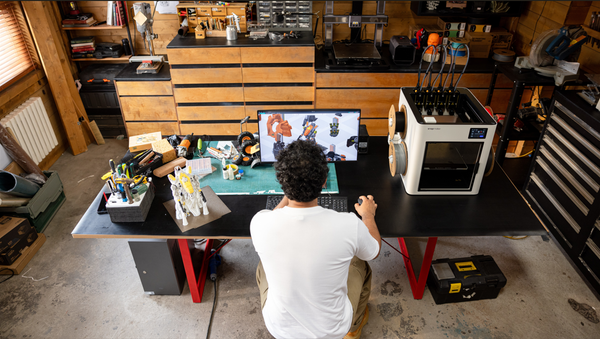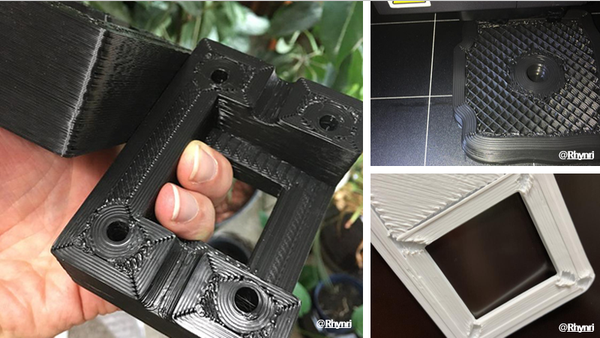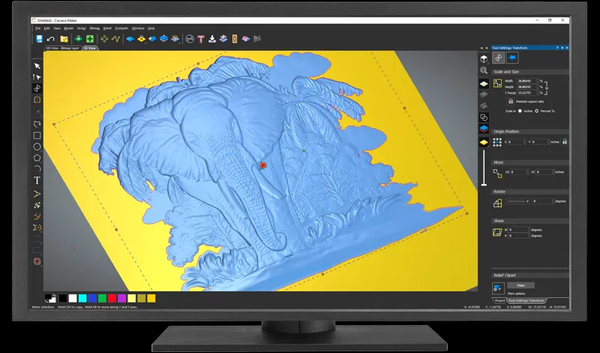Is Resin or Filament Better for 3D Printing?

3D printing has quickly garnered attention among professionals and 3D printing enthusiasts worldwide thanks to its marvelous applications and ability to bring your imagination to life. If you have just started 3D printing, you may wonder whether to use a resin vs filament 3D printer. Each of them is a different method for the printing process, with its own advantages and disadvantages. In this blog, we have compared resin vs filament to guide you through finding out which best suits your unique needs.
Decoding 3D Printing Methods: FDM vs. SLA
Before wondering whether resin or filament is better for 3D printing, you must know about each method in detail.
How a Filament 3D Printer (FDM) Works
Fused Deposition Modeling, or FDM, is the most widely used 3D printing technology. Here's how it works:
Extrusion Process: An FDM printer uses a hot nozzle to melt the thermoplastic filament, which gets extruded onto a build plate.
Layer-by-Layer Deposition: The nozzle moves back and forth, laying down material that sets as it cools.
Materials: The materials most generally associated with FDM are PLA (polylactic acid), ABS (acrylonitrile butadiene styrene), PETG, and TPU. Each has its properties and uses, from practical PLA for beginner users to flexible ABS for functional parts.
Common Uses: The merits of the filament 3D printing technique include massive model creation, functional parts and prototypes. Due to its versatility and affordability, it is relatively popular among hobbyists as well as professionals.
How a Resin 3D Printer (SLA) Works
Stereolithography (SLA) is in a different league:
Photopolymerization Process: SLA printers work on polymerizing liquid resin through a light source, usually a laser or projector. It polymerizes layer-wise in the exposed regions and solidifies into an object resulting from the process.
Light Projection Technologies Used: SLA can be implemented on various technologies, such as traditional SLA and DLP/LCD, each with superior speed and detail.
Common Uses: Resin 3D printing is famous for its high precision and smooth finishes. It is mainly used for complex models, dental prototypes, and jewelry.
Holistic Comparison: Pros and Cons
Let’s compare resin vs filament to learn whether a resin 3D printer better than filament or vice versa.
Print Quality and Resolution
- FDM: Deposition generally results in layer lines being visibly evident. For more complex designs, it may decrease the resolution-to-model.
- SLA: Smoother finish resolution without regard to printing process limitations. It is best for models with details or minute variations, such as jewelry and miniatures.
Materials and Applications
- FDM: Varying filaments are available, where the use of the material becomes wider at more functional parts and prototypes. An FDM printer typically has a larger build volume than an SLA printer, enabling the creation of larger models.
- SLA: Specialized resins are needed because the job has specifics that demand fine details, jewelry, or miniatures.
Learning Curve and User Experience
- FDM: More readily accessible and easier to start using, more manageable to set up and use.
- SLA: More time-consuming; handling the resin with care requires more elaborate post-processing procedures.
Setup and Maintenance
- FDM: Level the bed; periodic nozzle maintenance.
- SLA: Handle the resin and vat. The maintenance of the build platform requires more careful attention.
Proper ventilation is required in both FDM and SLA due to fumes and chemicals.
Post-Processing and Finishing
- FDM: You would likely have to remove supports after printing and sand or paint the surface.
- SLA: Prints more often require rinsing in isopropyl alcohol, curing under UV light, and eventually removing supports.
Is Resin or Filament Right for You?
Ultimately, your personal needs will determine whether to use resin or filament. For you to make the right decision, consider the following.
Identifying Your 3D Printing Needs
- Project requirements: The size, detail, and strength of your projects.
- Production volume and speed considerations: How quickly and how many do you need?
- Environmental factors: Good ventilation and air exchange in the workplace, without restrictions.
For complex projects requiring a larger build volume, consider the Snapmaker Artisan, offering a spacious 400mm x 400mm x 400mm workspace.
Budget Considerations
Cost vs. value: The upfront cost of the printer is compared with the ongoing supply cost. Finding the appropriate balance between quality and cost can be achieved by choosing what quality to focus on in a particular project based on a budget.
Application-Specific Scenarios
- Prototyping/technology development: Fast prototyping using FDM may be more practical, whereas detailed model-making with SLA will be more suitable.
- Hobby/applications: Choose between functional parts or designs that require intricate development. Consider specifically your profession's needs and the kind of material you would work on.
Long-Term Outlook and Scalability
- Upgrading the printer: Do you want the printers you use to offer an upgrade or modification capability as your use grows? Look for a community supporting the printer brand to learn from each other's collective experiences.
Final Thought
Resin and filament in the world of 3D printing--both have their pros and cons. Consider your needs, budget, and intended applications to make a wise decision. Whatever path you choose, you will enjoy incredible possibilities for creativity and innovation in 3D printing.




